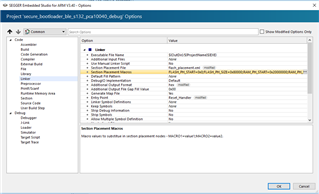Hi
I am writing a bootloader and am trying to get the start locations of the different memory segments e.g. the FLASH start segment from the flash_placement file.
On a different manufacturer's micro on a Rowley IDE I used:
int ramEnd = (int)(&__FLASH_segment_start__ );
But this returns 0x0 using Segger Embedded on a nrf52832
Please can you give me an example for Segger Embedded Studio
Thank you



